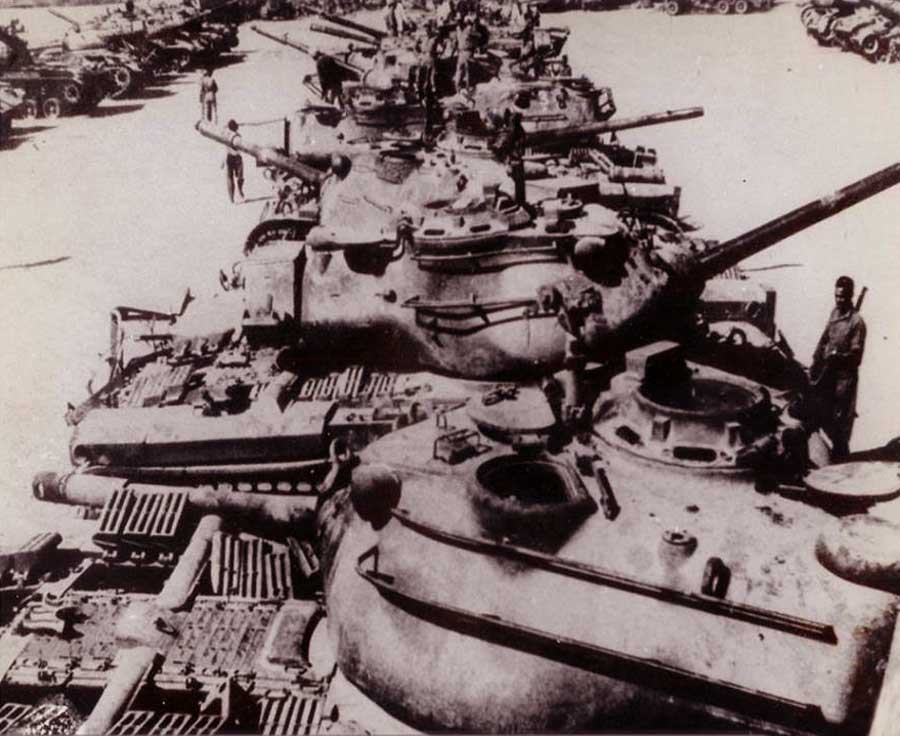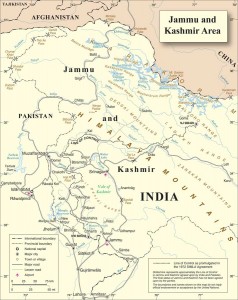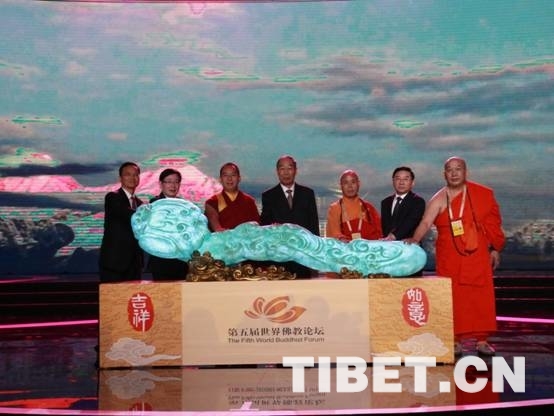IDR Blog
Unfolding the 1965 Indo Pakistan War: 50 Years Ago this day
The Indo-Pakistani War of 1965, also known as the Second Kashmir War was one of the most important conflicts in the region of South-East Asia during the post-World War II period. The conflict itself was not an isolated incident. Tensions between these two actors originated with the Partition of British India in 1947 and diverged into the 1947 war, along with systematic border skirmishes in the aftermath of the war and they continued after 1965 as well, most prominently with the 1971 War over East Pakistan and the 1999 Kargil War. The region still remains in turmoil to this day, especially after both countries decided to pursue nuclear strategies (neither country is a member of the NPT), with India conducting their first nuclear test in 1974 and Pakistan in 1998.
…around 4,000 Pakistani soldiers were captured or killed after the exposure of Operation Gibraltar and the subsequent Indian offensive, although in light of the official numbers estimated this might be an exaggeration.
On the occasion of its 50th Anniversary, the people of India should once again refresh their memories on how, our brave Indian soldiers valiantly fought for the motherland, while the rest of the nation lay asleep.
The Instigation – Problems in the Rann of Kutch
Kashmir was the most powerful reason which strained the relation between India and Pakistan, but it was certainly not the only one. Rann of Kutch is a region within the Indian state of Gujarat, which India held in possession since 1947. The Rann of Kutch became the perfect pretext for skirmishes and other kinds of limited military maneuvers as the Pakistani government laid claim to the northern part of the region ever since 1947. On the 8th of April 1965 the territory became the scene of several skirmishes between India and Pakistan, which lasted intermittently until the 30th of June, when the intervention of the United Kingdom compelled both states to solve their conflict in a legal framework. The results were yet another time unsatisfying for Pakistan as they attributed them almost 10 times less square miles of territory than they did to India.
The War
Operation Gibraltar
The first phase of the war began on the 5th of August 1965 when between 26,000 and 33,000 Pakistani soldiers crossed the Line of Control instituted in 1949 which delimited the regions of Kashmir controlled by Pakistan and India respectively, dressed as Kashmiri locals, who spread out alongside various localities within the Kashmir Valley. Since India had an uneasy history in dealing with the locals, especially in the Kashmir Valley where there was an overwhelming Muslim majority, the Pakistani government tried to spark a popular uprising by infiltrating its own military among the locals, in what was known as Operation Gibraltar. It is unclear to what extent Ayub Khan, who was at the time President of Pakistan, and the other army commanders sought to engage in a full scale war against India since they were aware ofIndia’s strong military capacities at that time.
Although it was met with some initial success mainly attributed to the technological superiority of their tanks, the Pakistani thrust did not reach Akhnur, but instead was halted by the retaliation of the Indian Air Force.
By following the conventional deterrence theory, we can conclude that Pakistan was not in a favorable position to attack India, since:
- After the defeat in the Sino-Indian War of 1962 India underwent a massive modernization program for the armed forces,
- India had announced on several occasions that they would not tolerate any border incursions by foreign troops and
- India had a significantly greater industrial capacity then Pakistan which would have given it a clear advantage during a protracted conflict. It is therefore possible that under these circumstances, the conflict itself spiraled out of control toward a direction previously unforeseen by the Pakistani officials and military commanders, although they were responsible for making the first move.
The Indian Retaliation
Operation Gibraltar was not the success which Pakistan expected it to be mainly because of miscalculations regarding the discontent present among the Kashmiri locals. Instead of being galvanized toward a rebellion by the Pakistani infiltrators, most of the locals remained neutral, some of them even rallying to the Indian side and tipping off the army that Pakistani regulars in disguise have advanced on several areas of the Kashmiri Valley. In all, it seems that only 4 districts joined the Pakistani cause and fought alongside them against India. After being informed on the Pakistani presence in the Kashmir Valley, the Indian army replied in kind by crossing the Line of Control and capturing several outposts from the Pakistani side of Kashmir, effectively dismantling one possible assumption made by the Pakistanis, namely that military action would remain confined to the ceasefire line. According to a much later statement made by Gohar Ayub Khan, who was at the time the Foreign Minister of Pakistan, somewhere around 4,000 Pakistani soldiers were captured or killed after the exposure of Operation Gibraltar and the subsequent Indian offensive, although in light of the official numbers estimated this might be an exaggeration.
In order to relieve the disorganized units being faced with annihilation in the Indian part of Kashmir, the Pakistani army initiated a counter-offensive on the 1st of September, codenamed Operation Grand Slam, in the Jammu province with the purpose of capturing Akhnur and thereby cutting off the supply lines for the Indian army. Although it was met with some initial success mainly attributed to the technological superiority of their tanks, the Pakistani thrust did not reach Akhnur, but instead was halted by the retaliation of the Indian Air Force.
Another version, narrated by Lt. Gen. Abdul Ali Malik who was relieved of his command during the beginning of Operation Grand Slam, in spite of significant progress being made, suggests that the Pakistani leaders did not want to capture Akhnur however, because of fears that this could push the conflict into an all-out war. The Jammu front saw further action especially in the region of Sialkot (in Pakistani Kashmir) where the Indian army was initially repealed but managed to retain some of the ground they had gain up to the 20th of September after winning a decisive victory at Phillora on the 11th of September.
On the 20th of September India held about three times more Pakistani territory, especially through the advances in the Lahore and Sialkot sectors…
The Punjab Front
After the Pakistani army launched Operation Grand Slam,India launched a strategic counter offensive in the Punjab region in order to thwart any potential Pakistani advance. The initial thrust began on the 6th of September with the main column heading toward the Pakistani city of Lahore. This attack left no doubt as to the scale of the conflict since for the first time it was clear that the international boundary had been violated. After some initial success the Indian army was halted on several directions and even repealed, allowing a Pakistani tank column to launch an offensive toward Amritsar and to capture the Khem Karan which was 5 km within the Indian border. The Pakistani advance was stopped however and its divisions routed at Asal Uttar, where one of the largest post-World War II tank battles took place, leaving 97 Pakistan tanks on the field. After this point we regained the initiative.
On the 20th of September India held about three times more Pakistani territory, especially through the advances in the Lahore and Sialkot sectors, than the Pakistani army held Indian Territory, although they had made some smaller gains in the northern parts of Kashmir. The death toll at that time was also slightly more favorable to India, who lost approximately 3000 soldiers while Pakistan had a number of approximately 3800 soldiers lost in action.
Foreign Interest
The People’s Republic of China
The diplomatic relations between the PRC and India were relatively poor at the outset of the 1965 Indo-Pakistani War, mainly due to the border problems which the two countries were arguing over for the past 6 years. Although India was one of the first countries to recognize the PRC and establish diplomatic relations with them in 1950, by the end of the decade the ties had rapidly deteriorated, especially due to conflicting views over the placement of borders in the Aksai Chin and Arunachal Pradesh regions but also because of India’s “hostile attitude towards Chinese actions in Tibet”. The diplomatic conflict later degenerated into a limited war, during the year 1962, in which the Chinese army won the military engagement but later withdrew to its original positions.
The war decisively strained the relation between the two countries and it also provided a background for the initiation of friendly relations between China and Pakistan.
The war decisively strained the relation between the two countries and it also provided a background for the initiation of friendly relations between China and Pakistan. Because during the Sino-Indian War, the United States had supplied emergency military and financial aid to India, without consulting Pakistan (although an agreement was previously established between the two parties specifying precisely this), the Pakistani government felt the need to foster better relations with other foreign powers who could provide them with international support in the region and the first choice was obviously the PRC, especially as they were also at odds with India over issues of their own. Thus, by the year 1963 “the two countries had signed a border agreement, signedtrade and barter agreements, and concluded an air transport agreement”. After 1962 the Chinese also got involved in the Kashmir problem in particular, maintaining that “the dispute should be resolved in accordance with the wishes of the people of Kashmir as pledged to them by India and Pakistan”, in line with the Pakistani policy of Kashmiri self-determination.
During the war itself, the PRC clearly allied itself with the Pakistani cause, in particular during the escalation of hostilities at the beginning of September. Thus, on the 5th of September, the Chinese Foreign Minister expressed “‘complete sympathy and support’ for Kashmir’s ‘just struggle’ and on the 7th of September they labeled the Indian offensive in Punjab an act of “naked aggression”. Further, after the Indian army crossed the international boundary, the Chinese government pursued a much more aggressive course of action, giving India a “three-day ultimatum to dismantle all their military works on the Chinese side of the Sikkim-Chinese boundary, or else ‘bear full responsibility for all the grave consequences arising there from’.
USSR
The relation between India and the USSR had an altogether opposite course than the relation between India and the People’s Republic of China. Due to the tough stance in favor of the non-aligned movement which India assumed immediately after the Partition of British India, the USSR did not engage in friendly relations towards India as they were vehemently opposed to the emergence of a strong non-aligned movement. In the post-Stalinist period however, in correlation to the influence which the PRC was beginning to gain in Asia, the USSR began a process of thawing relations with India which was also going to result in several acquisitions of military equipment, especially airplanes and helicopters, with the trade frequency intensifying significantly after the Sino-Indian War.
…at the outset of the 1965 conflict, the USSR had closer ties to India than to Pakistan…
The USSR still maintained amicable relations with Pakistan as well, considering that peace between the two countries was essential to containing the Chinese influence in the region. Although at the outset of the 1965 conflict, the USSR had closer ties to India than to Pakistan, a fact illustrated through the emphasis put on the “traditional friendship” relation between the USSR and India, by Russian governmental sources, the USSR maintained official neutrality throughout the war, offering its good offices for the mediation of a peace agreement at Tashkent several months after the ceasefire, in the establishment of which they also played an instrumental role.
The United States of America
The relations between the US and Pakistan in the first years after the British Partition of India were excellent, mainly due to the fact that Pakistan, trapped between three powerful regional neighbors (USSR, PRC and India), was in desperate need of strong allies and that the United States needed a strategic ally in the region, especially in order to halt the Russian influence in southern Asia, and prevent it from reaching the Arabian Sea. During that time, the US streamlined large sums of money in the form of economic aid, leading some to state that during the first decades of existence, the United States was the lifeline to Pakistan and that without U.S. diplomatic, military, and economic aid, Pakistan would have had great difficulties surviving. The military dimension was also an essential one and in 1954 the US and Pakistan signed their first arms agreement, after which the US supplied vast quantities of military equipment to Pakistan.
As mentioned previously however, by 1965 the relation between Pakistan and the US was somewhat cooled and it was nowhere near the excellent terms on which it was before 1962, due to what the Pakistani perceived as a US betrayal by the shipment of arms to the Indian side during the Sino-Indian War. Thus, the United States did not welcome the conflict which emerged on 1965 between India and Pakistan, declaring their neutrality, supporting efforts to end the war and being one of the primary actors supporting an arms embargo toward both India and Pakistan.
Post your Comment
One thought on “Unfolding the 1965 Indo Pakistan War: 50 Years Ago this day”
 Loading Comments
Loading Comments






WELL WRITTEN.